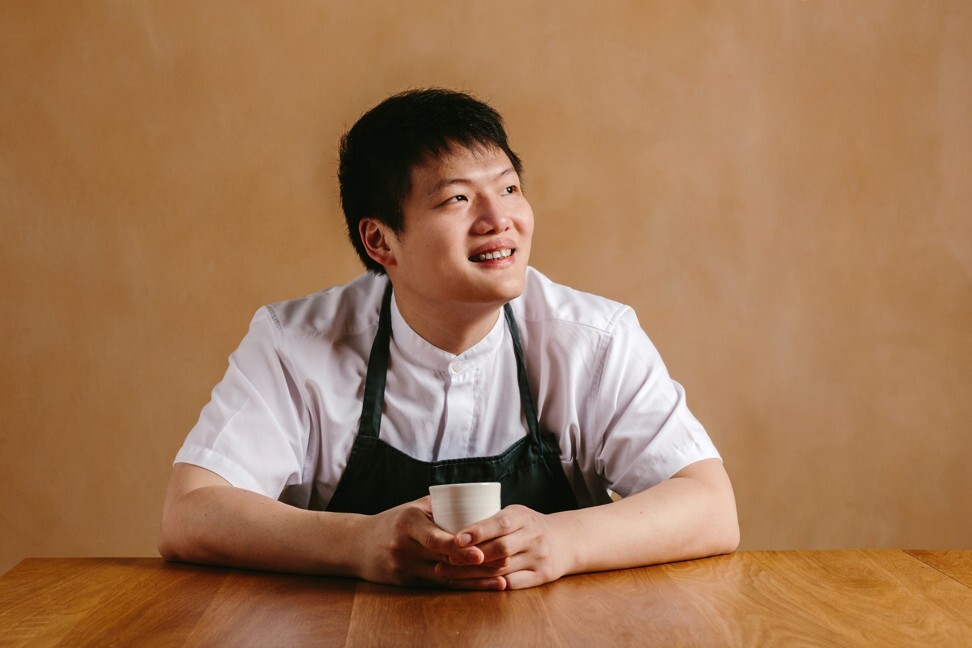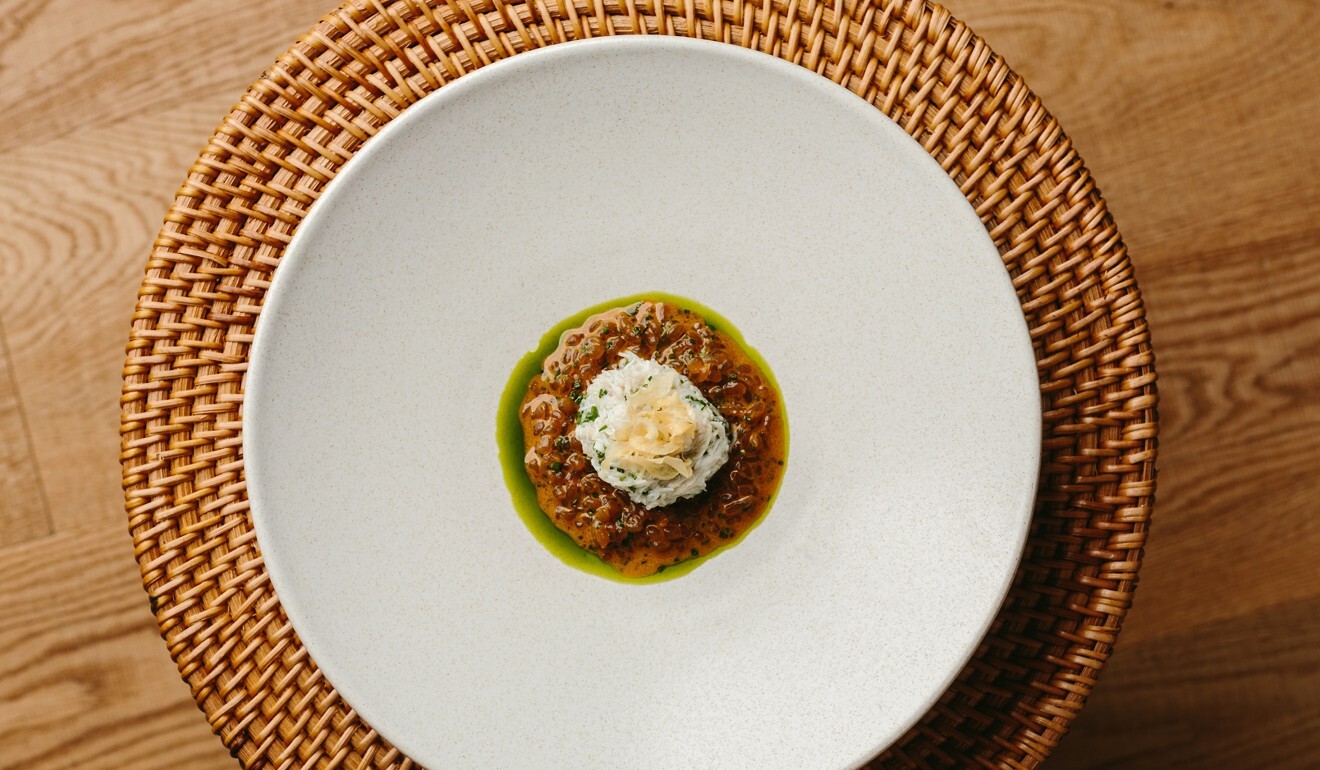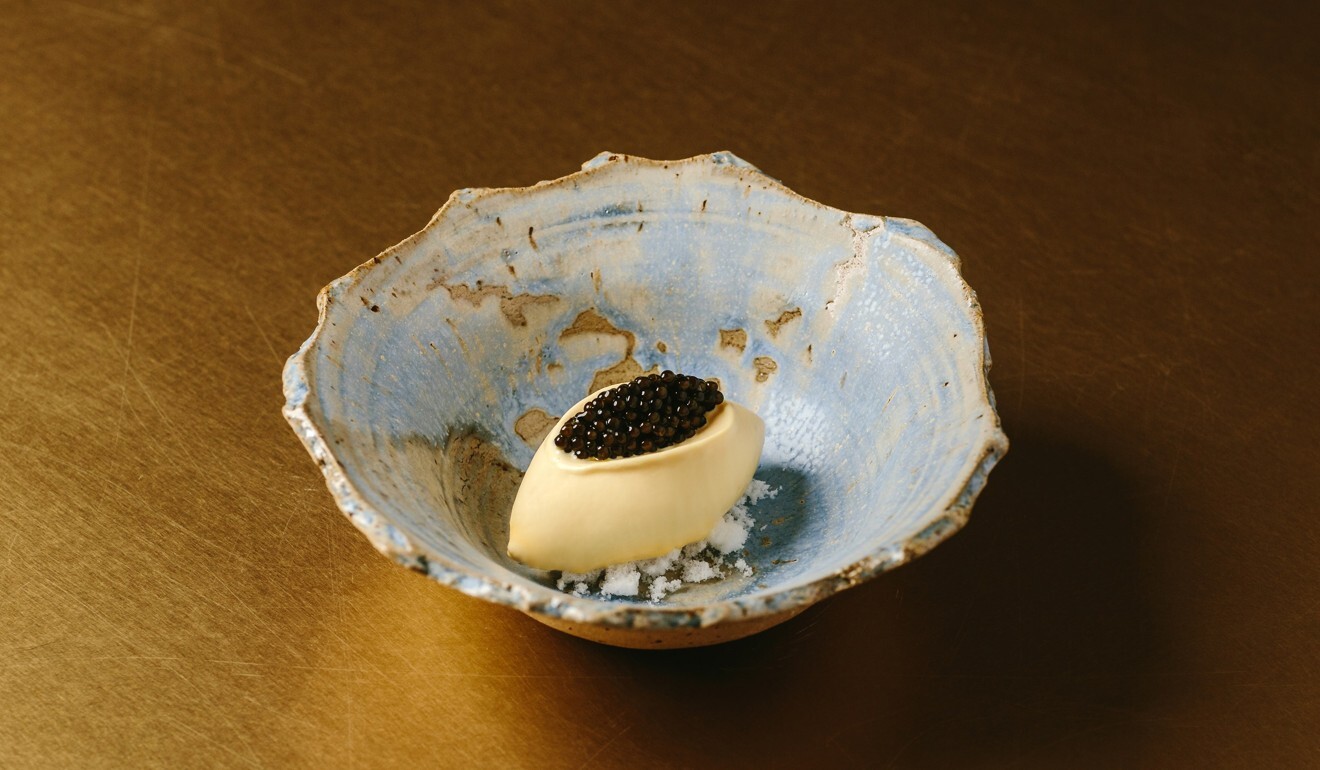
Singaporean chef Barry Quek opens Whey in Hong Kong, serving food inspired by home, after boning up on history of Lion City cuisine
- Quek has spent his career until now cooking French and other European dishes. For the first time the Singaporean will serve food inspired by dishes from home
- He has never cooked Singaporean food for guests before, and needed to read up on its roots and learn some new techniques
Singaporean chef Barry Quek may not have been able to go home this past year, but missing the flavours from the Lion City has inspired his new Hong Kong restaurant, Whey.
In the same building on Wellington Street, Central, as VEA and Miss Lee, Whey is new culinary territory for Quek, and diners are in for an intriguing journey.
In April 2020 he closed Beet, a European-style restaurant that featured chicken from Hong Kong’s New Territories with seasonal vegetables, Hokkaido scallops with citrus, and his famous sourdough bread with kefir (fermented milk) butter.
Then Quek threw himself into serving hawker-style food at Return of Lemak in BaseHall in the basement of Jardine House, Central, making dishes such as nonya laksa, nasi lemak and beef rendang.

Cooking Singaporean dishes was completely new for Quek, whose previous culinary experiences before coming to Hong Kong were at Michelin-starred French restaurants such as Joel Robuchon and Les Amis.
“I quite enjoyed being a hawker. You don’t serve 30 to 40 guests a day [as in a restaurant], probably hundreds, and then that changes everything,” he says. “You don’t have time to use your tweezers when you’re a hawker, everything has to be tasty and hot.”
This vegan ice cream tastes like real milk. Here’s why
After that experience he joined ZS Hospitality Group, which operates an eclectic mix of restaurants, from the two-Michelin star Cantonese fine-dining Ying Jee Club to Hansik Goo with Korean chef Mingoo, and Miss Lee, a modern Chinese vegetarian restaurant.
Quek helped start up JAM (or Joint Asian Market), where customers can mix and match Asian fast food dishes such as Korean fried chicken, steamed pork dumplings with truffle, spicy chicken dan dan noodles, nasi lemak and Vietnamese braised pork belly with rice.
The pandemic prevented him seeing his family and made him homesick, and led him to understand his Asian culinary roots.


“I’m Asian no matter how much French food I cook,” he says. “I won’t be able to cook as good as a Frenchman. For them it’s familiar, something they have eaten since they were a kid.”
At first he tried to incorporate Singaporean ingredients in the way he cooked at Beet, but it didn’t work.
“Beet was more European and Nordic which has clean and fresh flavours, while Singaporean food has more robust flavours,” he explains. Quek read up on the history of Singapore and how different ethnicities came together to create what is now known as Singaporean cuisine.

“I am Hokkien, and many [Hokkien Chinese] in Singapore are chefs because they were the last group to migrate to Singapore, and a lot of them cooked what they knew in China,” he says.
Armed with more knowledge about the history of Singaporean cuisine, Quek began experimenting with flavours he was familiar with and cooking dishes a different way.
For his bread course, instead of sourdough Quek serves buah keluak, a black nut that is fermented underground and then soaked for three days, the water changed each day, cracked open and the flesh inside cooked with water to make a paste. It is usually used in stews, curries, and braised pork and other meat dishes in Peranakan cuisine – the food of early Chinese migrants to Southeast Asia who intermarried with Malays. At Whey, Quek uses buah keluak to make brioche that comes with a dip served in the shell of the nut.


Another dish uses ripe jackfruit, which is made into a sauce and served with a seared scallop topped with prawn floss and dried sambal chilli. He also has his own riff off on bak kut teh (pork bone soup) using local pork ribs – the dish tastes more peppery and less like herbal medicine than usual, and the soup is a sauce seasoned with black garlic jam. Also on the menu is curry laksa served with konjac rice and flower crab.
Among the desserts is durian ice cream paired with caviar.
“I like salty desserts, and I didn’t want to just add salt to the durian ice cream, so I added caviar,” he says.
Quek adds: “I want to express and share with my guests what I really like to eat. I’m super excited [to open Whey]. I’ve always been surrounded by these ingredients but I didn’t cherish them.”
Whey will serve a tasting menu (HK$1,090) and a shorter menu (HK$890). The restaurant opens on May 25.
Whey, UG/F, The Wellington, 198 Wellington Street, Central, tel: 2693 3198

